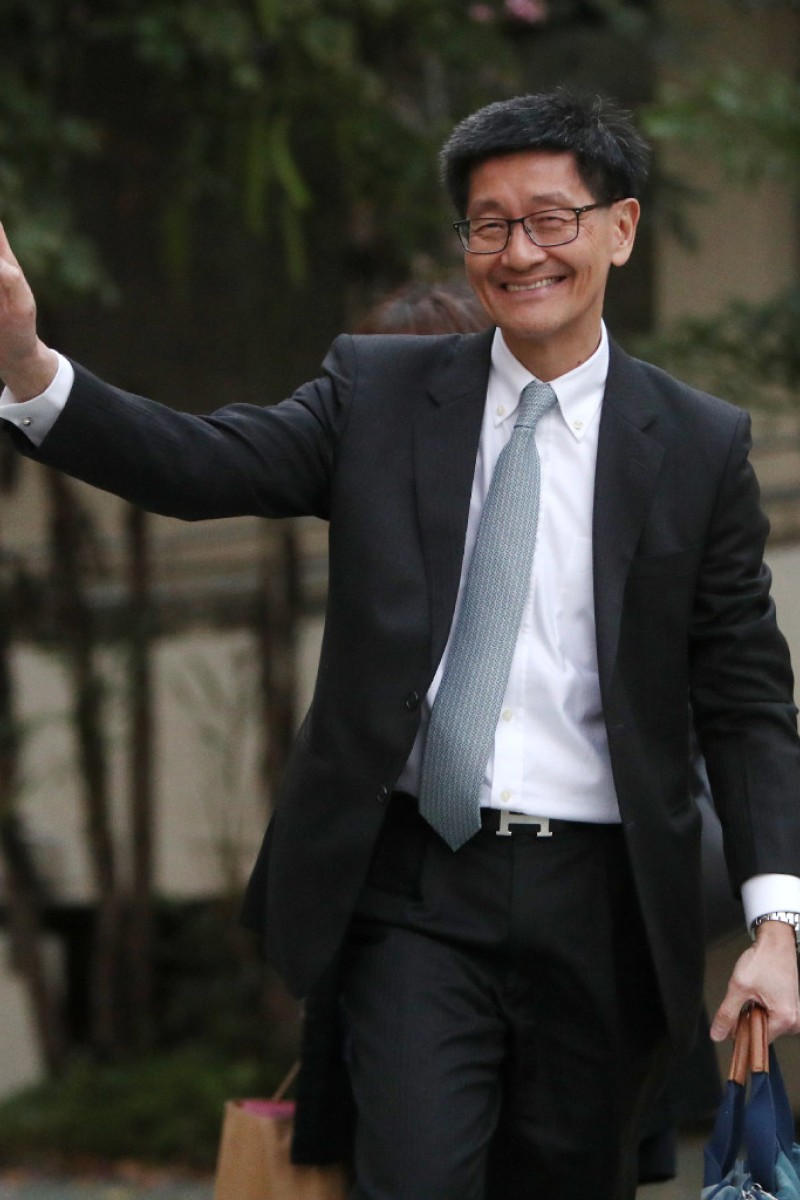
Rail operator’s CEO Lincoln Leong says anti-corruption authorities were told about whistle-blower’s claims but concerns over possible defamation meant they were left out of one sent to the government
 Lincoln Leong, the outgoing CEO of the MTR Corp, arrives at Tsuen Wan Court for the Sha Tin-Central rail link inquiry.
Lincoln Leong, the outgoing CEO of the MTR Corp, arrives at Tsuen Wan Court for the Sha Tin-Central rail link inquiry. Corruption allegations made against the firm accused of cutting corners in building part of Hong Kong’s most expensive rail project were reported to authorities by the city’s rail operator, but left out of its public report, a commission of inquiry heard on Tuesday.
Lincoln Leong Kwok-kuen, the outgoing CEO of the MTR Corporation, said the claims against Leighton Contractors (Asia) were reported to the Independent Commission Against Corruption, but not made public as MTR Corp lawyers were concerned some of the claims made by whistle-blower Jason Poon Chuk-hung were defamatory.
The inquiry is investigating allegations that Leighton workers did not properly install steel bars in the platforms at Hung Hom station, part of the new HK$97.1 billion (US$12.4 billion) Sha Tin-Central link, and changed the design of supporting walls without authorisation.
The scandal was exposed at the end of May this year, and the MTR Corp interviewed several people for a report submitted to the government on June 15. However, the evidence given by Poon, who worked for subcontractor, China Technology Corporation, was omitted.
When asked by Christopher To, counsel for China Technology, why the rail operator had not included Poon’s testimony in the public report, Leong said it was because the rail operator’s lawyers had concerns.
The rail operator has claimed it sent Poon’s allegations to the government separately in a fuller version of its public report. “One key aspect is that there were allegations of corruption, so we reported it to the ICAC,” he said. “Another key aspect is that there were a number of allegations our legal team believed would be defamatory, and therefore could have legal liabilities for the MTR Corp as well.”
The very Hong Kong reason why nine in ten MTR station names are actually inaccurate
Poon previously told the inquiry Leighton encountered problems in screwing steel bars into couplers on site, so it hired others to do the work and demanded that another subcontractor, Fang Sheung Construction, pay them for the supplied labour.
The whistle-blower claimed that amounted to malpractice, and enabled Leighton to reduce labour costs and save time, which it needed to do as it had been under pressure to meet the construction deadline.
In another development, former MTR Corp projects director Dr Philco Wong Nai-keung, who was forced to resign in August by the scandal, criticised the rail operator’s construction team for creating a “fake” record on the installation of the steel bars to fulfil the requirements of the quality supervision plan.
What’s with all the artwork on the MTR’s South Island Line?
Wong’s comments referred to a checklist document compiled in June this year based on site photos and staff’s recollections, but which was backdated to February 2017. The checklist was subsequently attached to the report MTR Corp sent to the government.
He said he only became aware of the document after he resigned, but called it “a big honest mistake” from his former staff. “Any retrospective records shouldn’t be created,” Wong said. “I think that when they created those records, they did it on a genuine basis. It could be regarded as a fake record, but they didn’t understand it.”
“To me, that was a big honest mistake. No one should ever do anything like this.”
Commission chairman and former judge Michael Hartmann described the practice of backdating records by the MTR Corp as “a worrying feature”, and said it undermined the credibility of its records.
Leong said he was only made aware of the incident in August, and knew nothing about its background. But, he said the rail operator had already hired external consultants to look into the matter.
“It’s a highly unfortunate issue,” he said. “One can always do better, and I would say that in this particular case there are issues with record keeping where we could have improved, and could have done better.”
The hearing continues.